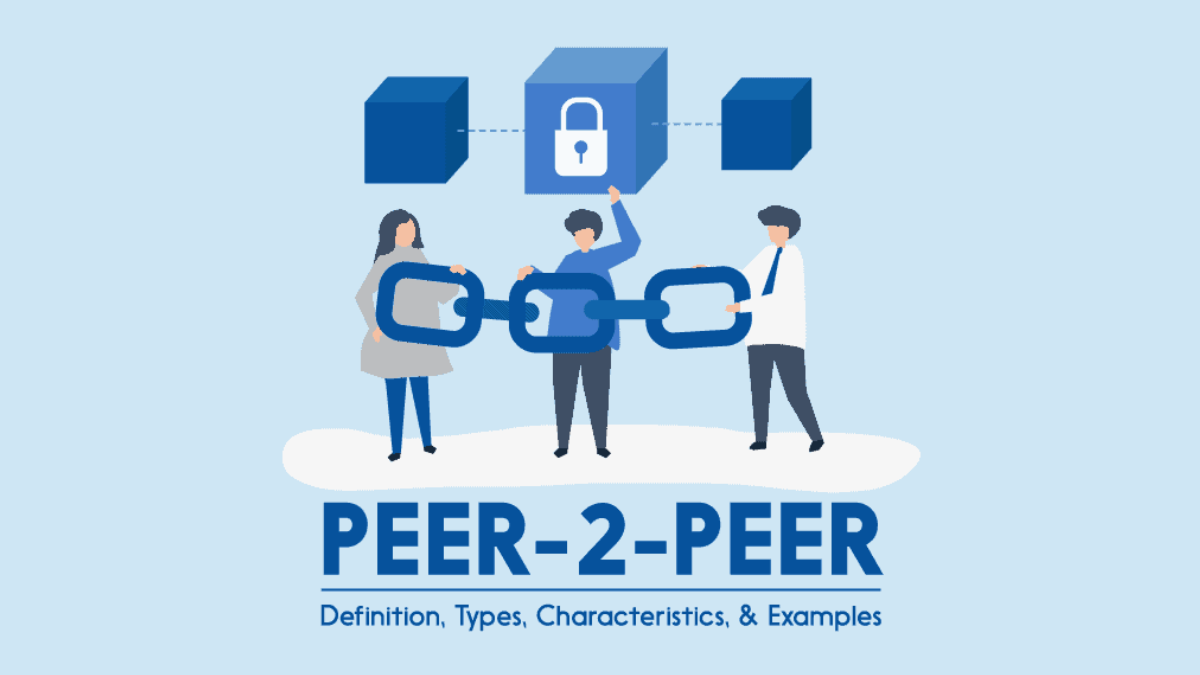Cryptocurrency involves a peer-reviewed network that exists in the form of a digital currency. Asides from its virtual characteristics, Cryptocurrency stands out for its decentralized nature. It runs solely on peer-to-peer transactions and public transparency. It is common to see cryptocurrency-related transactions on a peer-to-peer (P2P) platform. This platform allows for direct trading between a buyer and a seller. Subsequent sections of this article will give detailed explanations of some of the popular P2P networks.
Also read : Step-by-step Guide to Initiating a P2P Transaction
Table of Contents
ToggleFunctions of P2P Networks in Cryptocurrency
A P2P network is a coalition of decentralized networks interconnected via nodes or a series of computer systems. Unlike the traditional P2P network, crypto P2P networks do not have a central server. The implication is that each node is equal and can be validator and provider for a blockchain network.
Inherently, what makes the cryptocurrency P2P network special is its decentralization. The decentralized and distributed nature of blockchain P2P networks means they cannot be susceptible to malicious attacks such as Denial-of-Service attacks. The information there is also unalterable because it is a consensus network that requires everyone on the node to agree before data can be added or altered on the chain. As a cherry on top, the blockchain P2P networks are entirely free from governmental regulation or control from a central authority.
Also read : Types of P2P Network – A Guide
What are the Popular Types of P2P Networks
There are three P2P Crypto networks: Structured, unstructured, and hybrid.
- Structured P2P Networks
Structured P2P networks have a semblance of organization. They are more efficient and have higher levels of centralization than other P2P networks. Unlike unstructured P2P networks, they search effectively and do not require high memory usage. Structured networks employ a Distributed Hash Table to search for data. Although effective, this form of network requires high maintenance costs.
- Unstructured P2P Networks
With unstructured P2P networks, random nodes are scattered here and there but connected for communication. Unstructured P2P grids are easier to put together as different nodes can connect and communicate without a semblance of order. Likewise, nodes can join and leave the network at any time and do so frequently. This freedom of entry and exit is known as churning. However, this network requires high memory usage due to the span of the network.
- Hybrid P2P Networks
A hybrid network combines the peer-to-peer non-centralized system and the traditional centralized system. The two-faceted nature of the hybrid network makes it slightly better than the other two networks. It can combine the advantages of both methods of networks to provide better services to users. With hybrid P2P networks, you get the best of both worlds.
Also read : Using Binance P2P To Send Money Internationally
Conclusion
P2P networks are the foundation upon which blockchains and Cryptocurrency are built. Indeed, to delve fully into the blockchain world, it is important to understand the basic terms above. This understanding will aid areas of investments and interests and, more importantly, prevent being cut unawares due to little or no knowledge.











